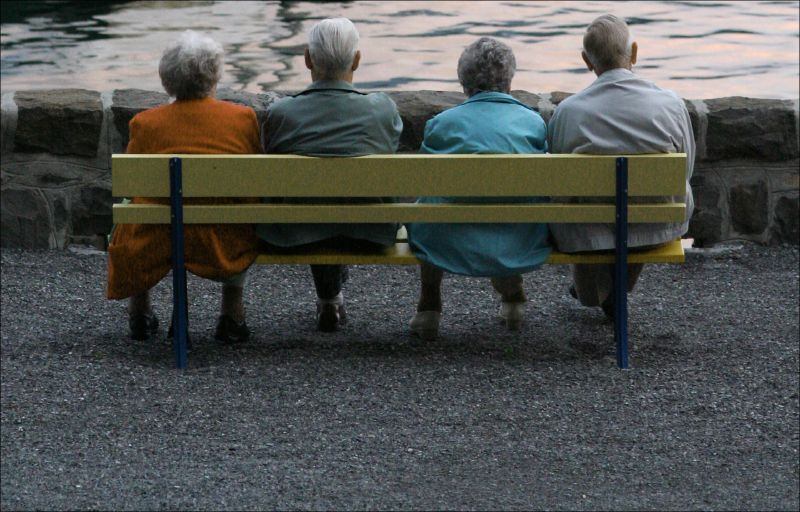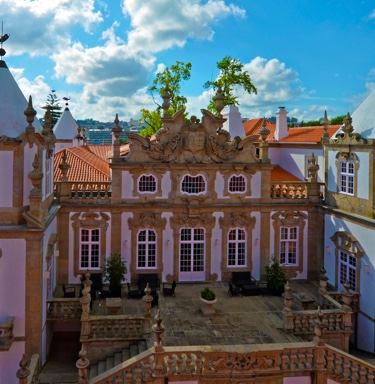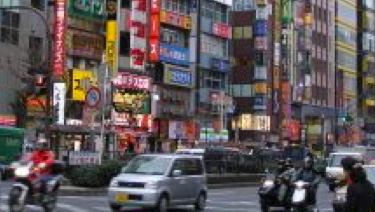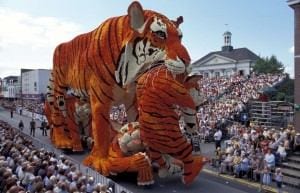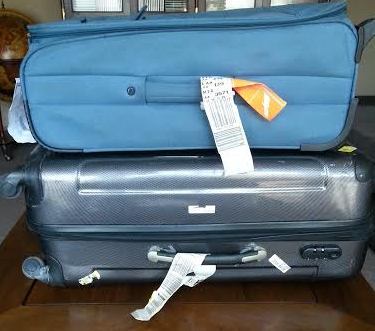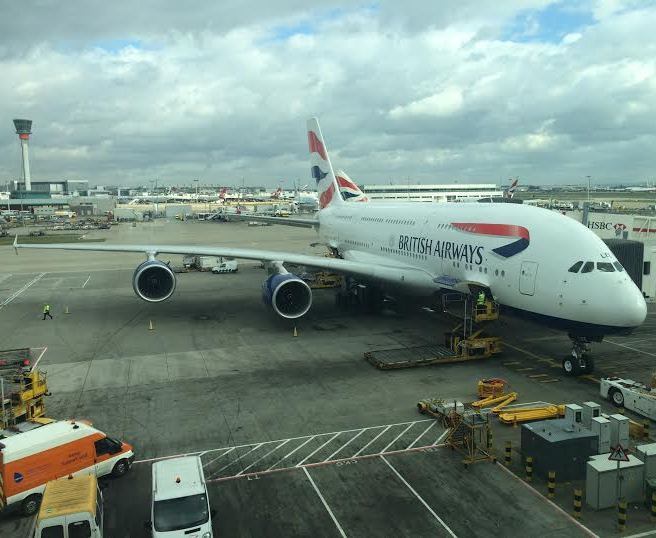Best Places to See Blooming Spring Flowers in The Netherlands
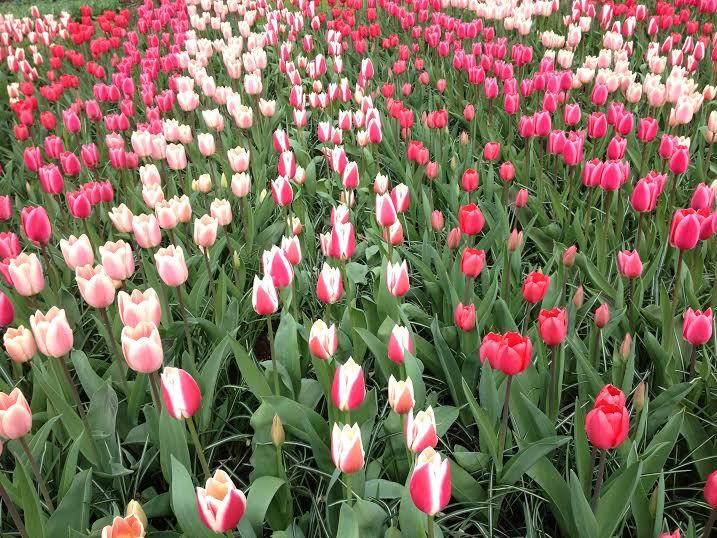 About 800,000 visitors make the annual pilgrimage to the Netherlands’ most famous display of tulips and other bulb flowers at Keukenhof Gardens, where 7 million bulbs explode with color over the course of two months. What if you arrive in Holland after the closing date of May 18? Fear not—the country is filled with pretty posies. Here are five options, from the world’s top flower auction to a charming local agritourism attraction.
About 800,000 visitors make the annual pilgrimage to the Netherlands’ most famous display of tulips and other bulb flowers at Keukenhof Gardens, where 7 million bulbs explode with color over the course of two months. What if you arrive in Holland after the closing date of May 18? Fear not—the country is filled with pretty posies. Here are five options, from the world’s top flower auction to a charming local agritourism attraction.
1) While the Dutch are crazy for tulips, nothing compares to Tulipmania, a speculative frenzy from 1636 to 1637, fueled by exotic specimens that turned out to be diseased. A great place to get a primer on the past is at the Amsterdam Tulip Museum. The private museum, operated by bulb growers, traces the tulip’s origin as a wildflower in Central Asia, through its cultivation in Turkey and then to the Netherlands in the late 1500s. An interesting short film spotlights a modern-day bulb-growing family, shown in a room with walls plastered in cheery petals. At the museum’s gift shop, you’ll find tulip-themed art, trinkets, and, of course, bulbs for sale.
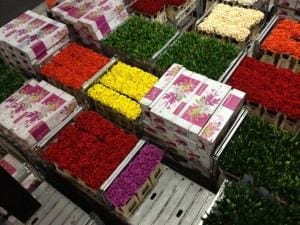 2) Put your eyes on the pulse of the world flower trade at FloraHolland in Aalsmeer, 30 minutes southwest of Amsterdam. Called the Wall Street of the flower trade, this massive series of warehouses and offices is owned by a cooperative of 5,000 global growers who every weekday sell at auction 21 million stems of flowers in 20,000 varieties, as well as 2 million potted plants. For visitors who look down on the scene from a raised walkway, the most colorful spot is the warehouse area, where crates of cut flowers are ferried from cold storage to transport points by hundreds of workers. From above, the scene looks like one giant video game. Guests also can peer through a glass window into the auction rooms, where traders work on computers while eyeing a large auction clock, which tallies about 144,000 transactions a day.
2) Put your eyes on the pulse of the world flower trade at FloraHolland in Aalsmeer, 30 minutes southwest of Amsterdam. Called the Wall Street of the flower trade, this massive series of warehouses and offices is owned by a cooperative of 5,000 global growers who every weekday sell at auction 21 million stems of flowers in 20,000 varieties, as well as 2 million potted plants. For visitors who look down on the scene from a raised walkway, the most colorful spot is the warehouse area, where crates of cut flowers are ferried from cold storage to transport points by hundreds of workers. From above, the scene looks like one giant video game. Guests also can peer through a glass window into the auction rooms, where traders work on computers while eyeing a large auction clock, which tallies about 144,000 transactions a day.
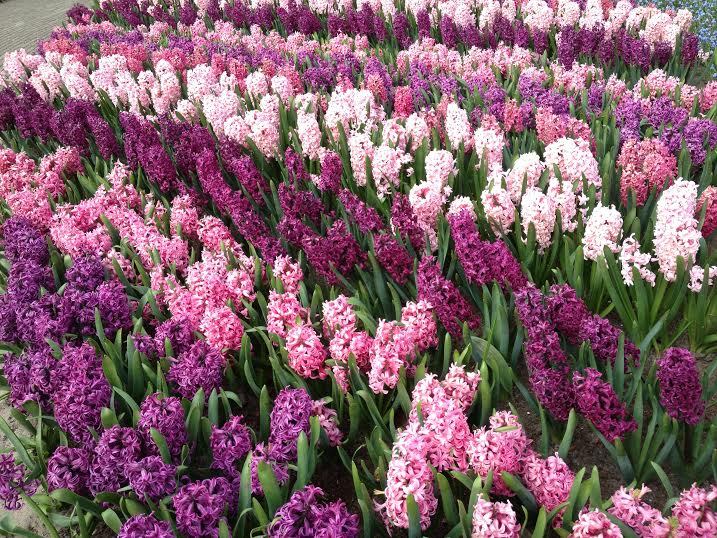 3) Aalsmeer is most famous for its flower auction, but the area also holds the distinction of being the cut-lilac capital of the world, in part thanks to the super fertile soil dredged up in its canals and lakes. Tourists can take guided or unguided boat cruises of the scenic waterways here, which narrow to navigate around low-lying fields thick with dense lilac shrubs. From mid-December through April, you can visit Klaas Joren Gzn. Nursery, the leading supplier of cut lilacs, selling some 300,000 stems each spring in up to 20 varieties. While you’re in town, also check out the Historic Garden Museum, where you’ll find hundreds of heirloom plants grown in vintage greenhouses, along with a replicated 1930 auction clock.
3) Aalsmeer is most famous for its flower auction, but the area also holds the distinction of being the cut-lilac capital of the world, in part thanks to the super fertile soil dredged up in its canals and lakes. Tourists can take guided or unguided boat cruises of the scenic waterways here, which narrow to navigate around low-lying fields thick with dense lilac shrubs. From mid-December through April, you can visit Klaas Joren Gzn. Nursery, the leading supplier of cut lilacs, selling some 300,000 stems each spring in up to 20 varieties. While you’re in town, also check out the Historic Garden Museum, where you’ll find hundreds of heirloom plants grown in vintage greenhouses, along with a replicated 1930 auction clock.
4) At Tulpenland (Tulipland), a small attraction opened in 2012 by the large bulb company Fluwel, the family-run enterprise paid attention to every detail. Because this high-quality, low-key attraction an hour north of Amsterdam is off the beaten path, you’ll encounter mostly Dutch tourists. Visitors first follow a wooded drive decorated with antique bulb-picking baskets to the colorful cafe and gift shop, which doubles as the entrance. From there, a path decorated with willow branches takes you by informational displays, with fascinating factoids for young and old. Near the area displaying historic farm equipment, kids can ride toy tractors around a course. Adults, meanwhile, will enjoy a nearby tulip-themed art exhibit. Compact but colorful tulip beds are scattered throughout Tulpenland, and bulbs bloom from spring to fall, thanks to Fluwel’s greenhouses.
5) Dahlias take center stage on the first Sunday in September in Zundert, a small city in the south of the country famous for hosting the world’s oldest (since 1936) and largest flower parade, Corso Zundert. For months, local villages compete to create intricate and complex flower sculptures—many with moving parts—seen by tens of thousands of spectators. The older residents typically plant and grow the dahlias, while the younger set builds the massive floats under large tents. Also filling the streets on parade day are musicians and performers, market stalls, and food vendors. Zundert has another claim to fame as well, as the birthplace of another Dutch icon—Vincent Van Gogh.
Get more flower power inspiration:
- Where to find spring flowers in the U.S.
- Keukenhof and Floriade: Where to find spring blooms in the Netherlands
- Travel to see the first signs of spring
Text and additional photos by Diane Daniel for PeterGreenberg. You can view her blog posts at: www.placeswegopeoplewesee.com.





